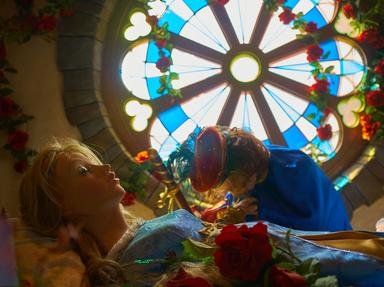Quiz Answer Key and Fun Facts
1. What time period best describes the era in which the events of "Sleeping Beauty" (1959) take place?
2. During the opening titles of "Sleeping Beauty" (1959), Technicolor and which other "tech"-nology are listed right under the very title "Sleeping Beauty"?
3. "Sleeping Beauty" (1959) is the last animated feature film that Walt Disney himself would directly influence. But who is listed as the supervising director during the opening titles?
4. Now for the plot! Three good fairies visit the infant Princess Aurora during her christening in the castle in "Sleeping Beauty" (1959). Which is NOT one of their names?
5. Who is the wicked fairy who curses Princess Aurora to die in "Sleeping Beauty"?
6. For comic relief in Walt Disney's "Sleeping Beauty" (1959), King Stefan and King Hubert drink during and quarrel following what song?
7. What kind of creature discovers where Aurora (alias Briar Rose) is hiding to avoid the curse in "Sleeping Beauty" (1959)?
8. What barrier is erected to protect the kingdom of "Sleeping Beauty" (1959) while it endures its long slumber?
9. During the climactic battle in "Sleeping Beauty" (1959), into what creature does the evil fairy transform herself?
10. In the dance scene in the forest between the Prince and the Princess, as well as the dance scene at the end of the movie, what theme song is played during "Sleeping Beauty" (1959)?
Source: Author
gracious1
This quiz was reviewed by FunTrivia editor
jmorrow before going online.
Any errors found in FunTrivia content are routinely corrected through our feedback system.
